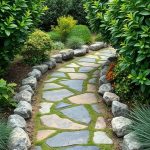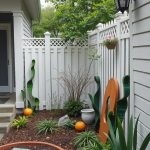Steep hills can be a challenge for landscaping, but they also offer unique opportunities to create stunning outdoor spaces. Whether you want to make the most of your sloped yard or just need some inspiration, here are 19 creative ideas to elevate your hillside landscaping game!
Terraced Garden Design

Terraced gardens are a fantastic way to make the most of steep landscapes. They create a visually appealing layout while also helping with soil erosion. The image shows a beautiful terraced garden filled with vibrant flowers and lush greenery.
The steps in the garden allow for easy access and maintenance. Each level can showcase different plants, adding variety and color. The use of stone walls not only supports the structure but also adds a rustic charm.
Consider incorporating plants that thrive in your climate. Succulents, like those seen in the image, are great for lower maintenance. Bright flowers can bring life to each terrace, making the space inviting and cheerful.
Don’t forget to add pathways for easy navigation. This design not only enhances the beauty of your yard but also creates a functional outdoor space. A terraced garden can truly transform a steep hill into a stunning landscape.
Pathway Lighting Ideas
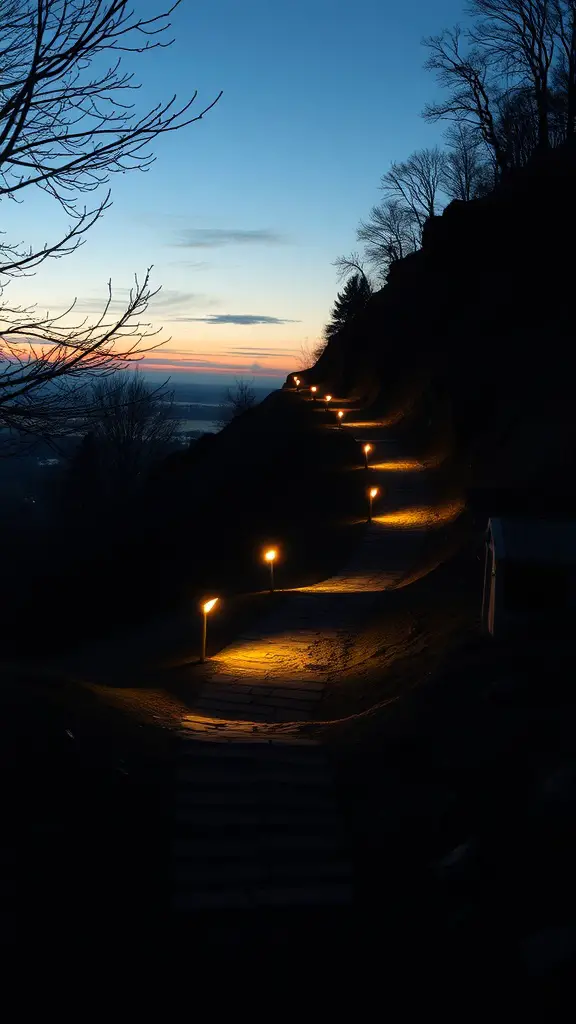
When it comes to landscaping steep hills, pathway lighting can make a huge difference. The image shows a beautifully lit path winding up a hillside, perfect for guiding guests safely while adding charm to the landscape.
The soft glow from the lights creates a welcoming atmosphere, making the pathway not just functional but also visually appealing. This kind of lighting can highlight the natural contours of the hill, enhancing the overall design.
Using solar-powered lights is a great option for eco-friendly landscaping. They charge during the day and illuminate the path at night, saving energy and reducing costs. You can also mix different styles of lights to create a unique look that fits your taste.
Consider placing lights at intervals along the path to ensure visibility. This not only helps in navigating the slope but also adds a magical touch to evening strolls. With the right lighting, your steep hill can become a stunning feature of your outdoor space.
Water Feature on a Hill

Imagine a stunning waterfall cascading down a rocky hill, creating a serene oasis in your landscape. This natural water feature can transform a steep hill into a breathtaking focal point. The sound of flowing water adds a calming element, making it a perfect spot for relaxation.
Incorporating a waterfall into your hillside design not only enhances the visual appeal but also attracts local wildlife. Birds and butterflies are drawn to the water, adding life to your garden. Surrounding the waterfall with lush greenery and smooth stones can create a harmonious environment.
Consider adding a small pond at the base of the waterfall. This can serve as a habitat for fish and aquatic plants, further enriching your landscape. Whether you choose a natural look or a more structured design, a water feature on a hill can elevate your outdoor space.
Retaining Wall Solutions
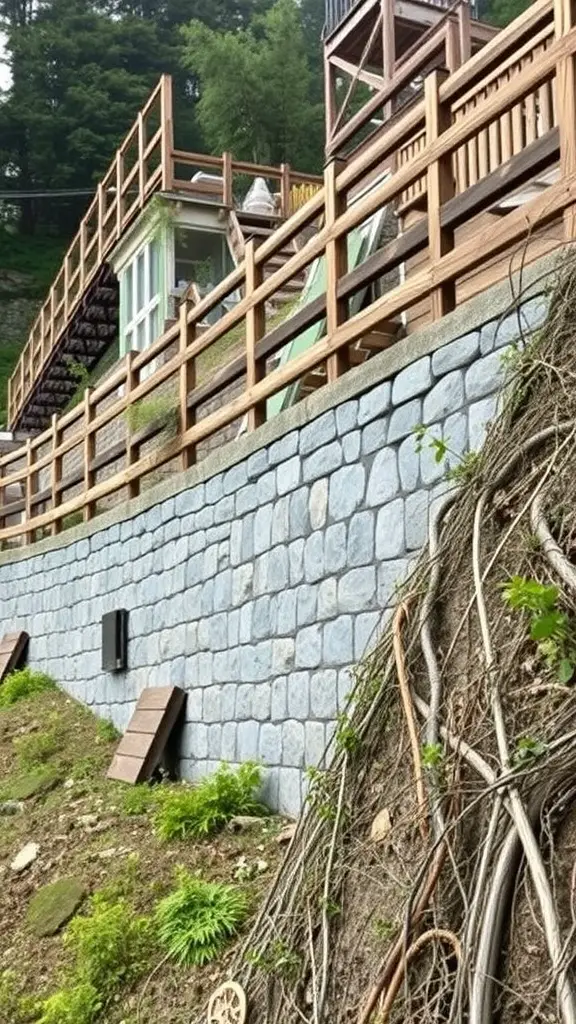
When dealing with steep hills, retaining walls are essential. They help manage soil erosion and create usable space in your yard. The image shows a well-constructed stone retaining wall that offers both functionality and style.
This wall not only supports the hillside but also adds a nice visual element to the landscape. The natural stone design blends well with the surrounding greenery, making it an attractive feature. You can see how the wall creates a level area above, perfect for planting or even a cozy seating spot.
Using materials like stone or timber can enhance the overall look of your outdoor space. You can also incorporate plants along the wall for added beauty and to help with drainage. This approach not only stabilizes the slope but also brings life to the area.
Consider the height and design of your retaining wall based on your specific needs. Whether you want something simple or more elaborate, there are plenty of options to fit your style and budget. A well-designed retaining wall can truly transform a steep hill into a functional and beautiful part of your landscape.
Outdoor Seating Areas

Creating outdoor seating areas on steep hills can turn a challenging landscape into a cozy retreat. This image showcases a lovely setup with wooden chairs and tables, perfect for enjoying a meal or a cup of coffee while soaking in the stunning views.
The arrangement of the seating is practical and inviting. The tables are placed at a slight angle, making the most of the slope while providing a comfortable space for relaxation. The addition of cushions adds a touch of comfort, making it a great spot to unwind.
Surrounded by greenery and with a breathtaking view of the valley below, this area encourages social gatherings. Whether it’s a small get-together or a quiet moment alone, the outdoor seating is versatile and appealing.
Incorporating plants and natural elements can enhance the overall look. The stone walls and pathways blend beautifully with the natural surroundings. This design not only maximizes space but also creates a welcoming atmosphere.
Slope-Safe Planting
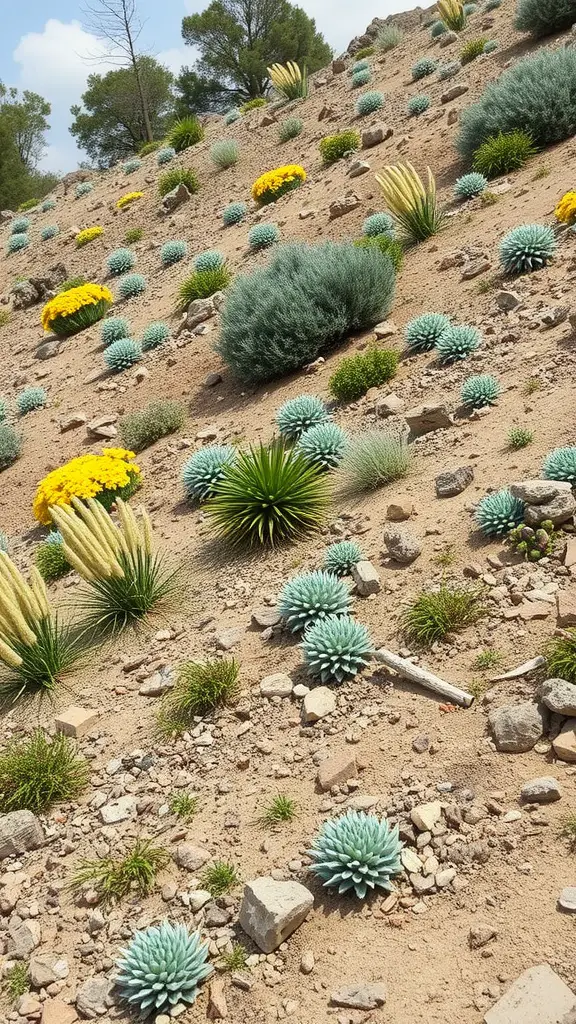
When dealing with steep hills, choosing the right plants is key. The image shows a vibrant landscape filled with various plants that thrive on slopes. Notice how the arrangement creates a beautiful, natural look while also preventing soil erosion.
Using drought-resistant plants is a smart choice for steep areas. The blue-green succulents and the bright yellow flowers add color and texture, making the hillside visually appealing. These plants are well-suited for dry conditions and help stabilize the soil.
Another important aspect is the use of rocks and gravel. They not only enhance the aesthetic but also aid in drainage. This setup allows rainwater to flow without washing away the soil, keeping your hillside healthy.
Incorporating different heights and textures can create depth. The taller plants, like the ones seen in the image, provide contrast against the lower-growing succulents. This variety keeps the landscape interesting and lively.
Vertical Garden Walls

Vertical garden walls are a fantastic way to make the most of steep landscapes. They turn a challenging slope into a lush, green feature that adds beauty and life to your space.
The image showcases a vibrant vertical garden filled with various plants. The colorful flowers and lush greenery create a stunning visual effect. This type of garden not only looks great but also helps with erosion control on steep hills.
Using different plant types can add texture and depth to your garden wall. Consider mixing flowering plants with ferns and succulents for a diverse look. The arrangement can be tailored to fit your style, whether you prefer a wild, natural feel or a more structured design.
Vertical gardens are also practical. They can improve air quality and provide insulation for your home. Plus, they offer a unique way to grow herbs and vegetables in limited space. So, if you have a steep hill, think about creating a vertical garden wall to enhance your outdoor area.
Stone Steps Integration
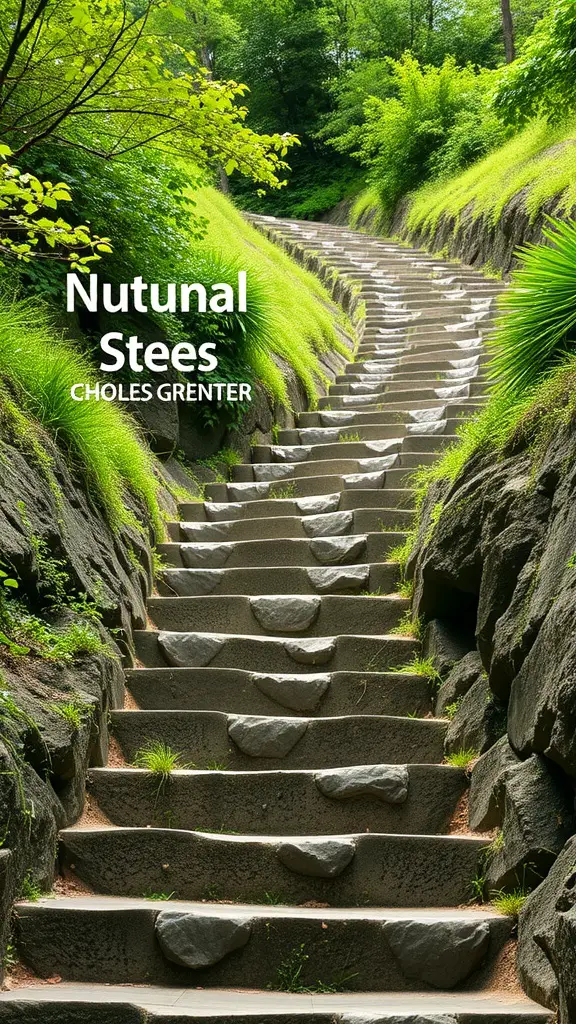
Integrating stone steps into a steep hill landscape can create a stunning visual appeal. The image showcases a beautifully crafted set of stone steps that wind their way up a lush hillside. Each step is designed with care, blending seamlessly with the natural surroundings.
These steps not only serve a practical purpose but also enhance the overall aesthetic of the garden. The combination of stone and greenery creates a harmonious look. The grass and plants that frame the steps add a touch of softness, making the hardscape feel inviting.
When planning your own stone steps, consider the materials that complement your home and garden style. Natural stone offers durability and a timeless look. You can also play with different shapes and sizes to create a unique pathway that draws the eye upward.
Adding lighting along the steps can provide safety and highlight the beauty of your design at night. This integration of stone steps into your landscaping can transform a steep hill into a charming and functional space.
Native Plant Landscaping
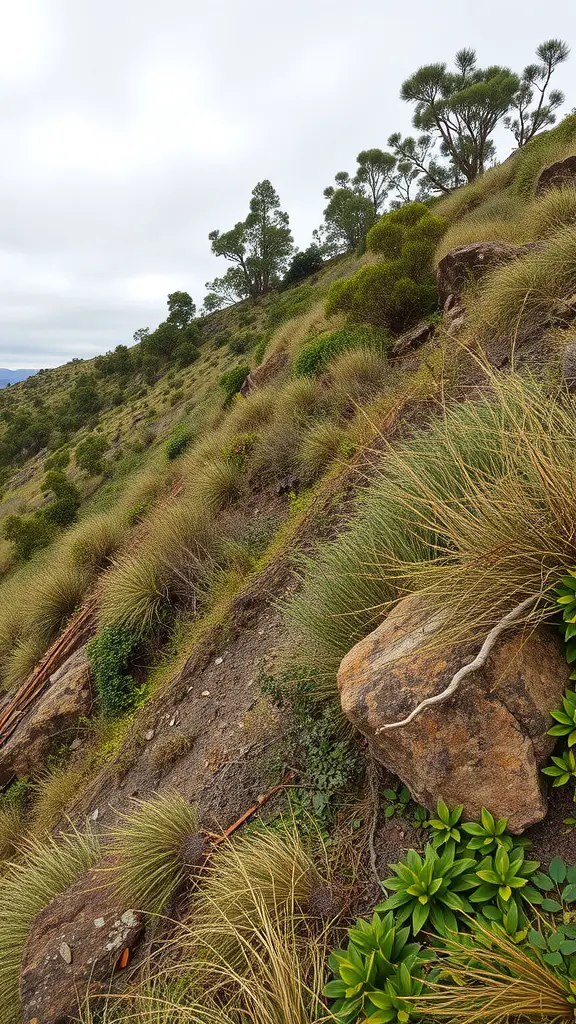
When it comes to steep hill landscaping, using native plants is a smart choice. They thrive in local conditions and require less maintenance. The image shows a beautiful hillside covered with native grasses and shrubs, perfectly suited for the environment.
Native plants help prevent soil erosion, which is especially important on slopes. Their root systems hold the soil in place, reducing the risk of landslides. Plus, they attract local wildlife, adding life to your garden.
Choosing plants that are native to your area means they are adapted to the local climate and soil. This makes them more resilient to pests and diseases. You can create a stunning landscape that looks natural and requires minimal care.
Consider incorporating a variety of heights and textures to create visual interest. The mix of grasses and low shrubs in the image showcases how diverse native plant landscaping can be. It’s a great way to make your steep hill not just functional, but also beautiful.
Irrigation Solutions for Steep Slopes
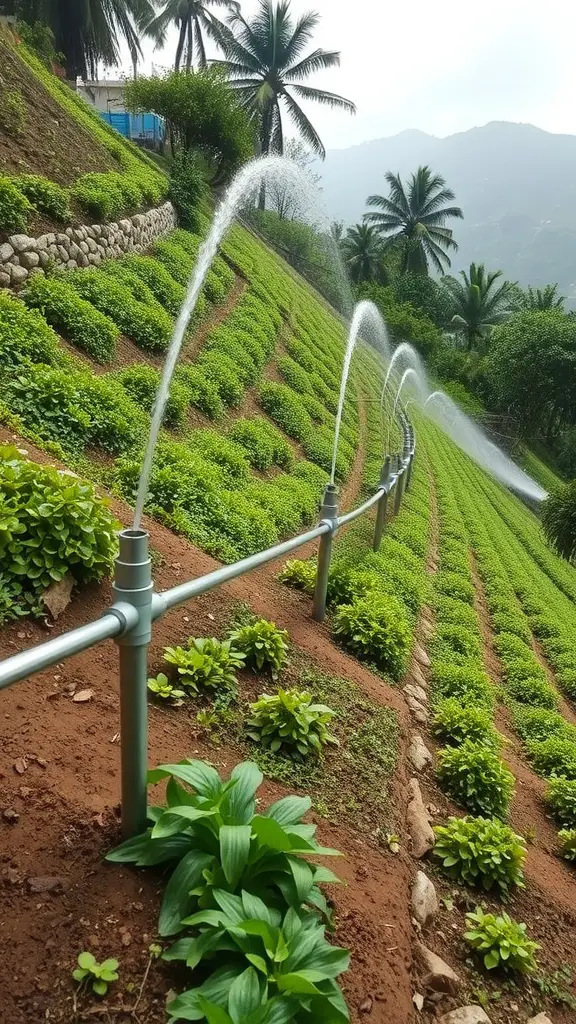
Managing a steep slope can be tricky, especially when it comes to keeping plants healthy. The image shows a well-designed irrigation system that effectively waters the plants on a hillside. This setup is essential for maintaining lush greenery in challenging terrains.
The pipes are strategically placed to ensure even water distribution. This method helps prevent soil erosion, which is a common issue on steep slopes. The gentle spray from the irrigation system allows water to soak in slowly, giving plants the moisture they need without overwhelming them.
Using an irrigation system like this not only saves time but also conserves water. It’s a smart choice for anyone looking to keep their hillside garden thriving. With the right setup, you can enjoy a beautiful landscape without the stress of constant manual watering.
Edible Landscaping Concepts

Steep hills can be a challenge, but they also offer a unique opportunity for creative landscaping. This image showcases a vibrant edible landscape, where various plants thrive on a sloped terrain. The use of raised beds makes it easy to cultivate herbs, vegetables, and fruits, turning a challenging space into a productive garden.
In the foreground, you can see lush greenery, including leafy vegetables and herbs, while the background features fruit trees and flowering plants. This mix not only provides food but also adds beauty to the landscape. The arrangement of plants in tiers helps with drainage and sunlight exposure, ensuring that each plant gets what it needs to grow.
Using edible plants in landscaping not only beautifies your space but also promotes sustainability. Imagine stepping into your garden and picking fresh basil for your pasta or lemons for your tea. It’s a delightful way to enjoy nature and enhance your meals.
Wildflower Meadow on a Slope
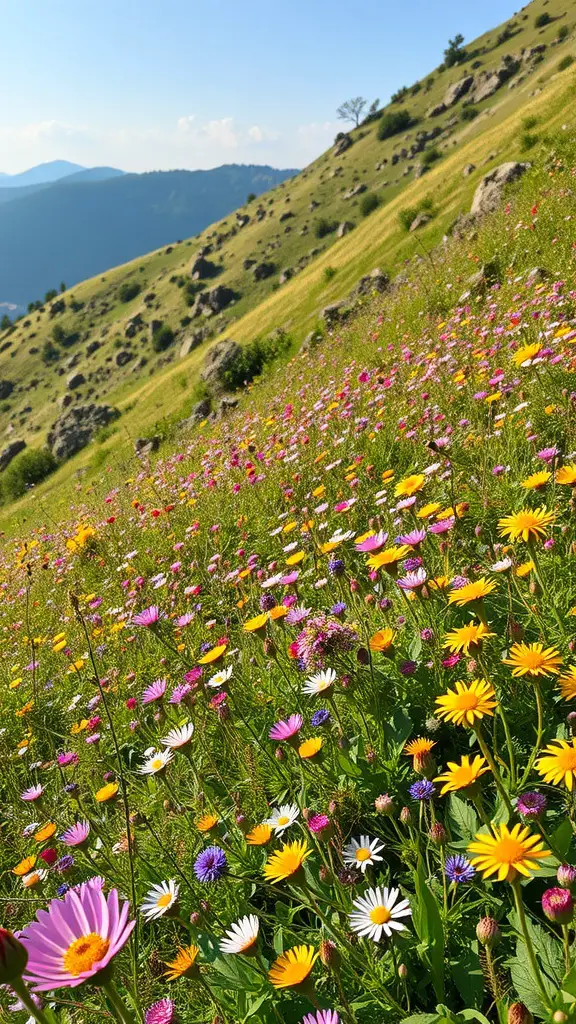
Creating a wildflower meadow on a slope is a fantastic way to enhance your landscape. This vibrant scene showcases a colorful mix of flowers, bringing life to the hillside. The bright yellows, pinks, and whites create a cheerful atmosphere that invites nature lovers to pause and appreciate the beauty.
Wildflower meadows are not just pretty; they also support local wildlife. Bees, butterflies, and other pollinators thrive in these environments. By planting native wildflowers, you can help sustain these important species while adding charm to your yard.
When planning your wildflower meadow, consider the types of flowers that will flourish in your area. Native plants are often the best choice, as they are adapted to local conditions. A mix of perennials and annuals can provide continuous blooms throughout the seasons.
Maintaining a wildflower meadow is relatively easy. Minimal mowing and occasional weeding are usually all that’s needed. This low-maintenance option allows you to enjoy a beautiful landscape without a lot of effort. So, if you have a slope in your yard, think about transforming it into a stunning wildflower haven!
Bamboo Fencing for Privacy
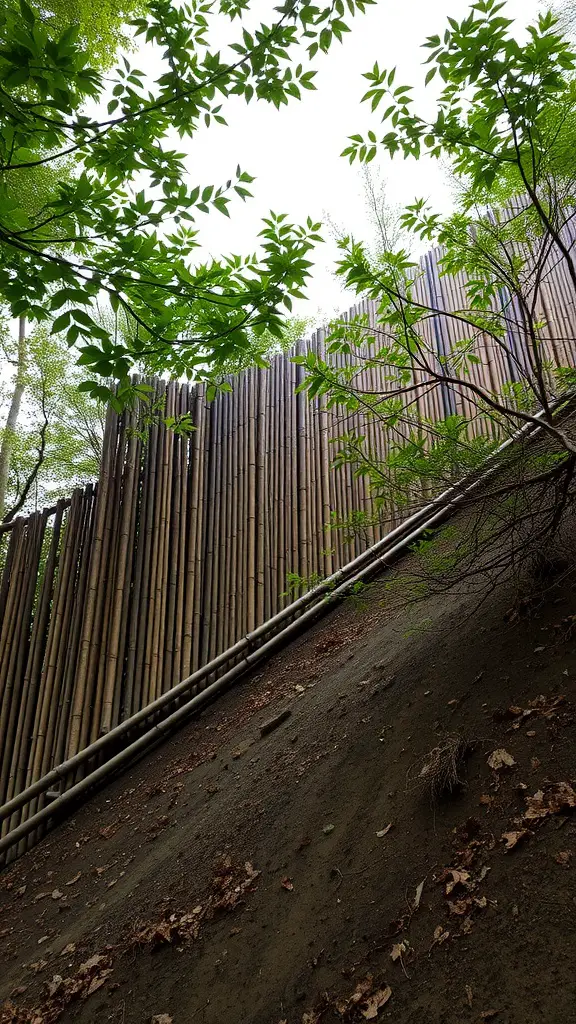
Bamboo fencing is a fantastic choice for creating privacy on steep hills. The image shows a tall bamboo fence, standing strong against the backdrop of a sloping landscape. This natural material not only looks great but also blends seamlessly with the surrounding greenery.
Using bamboo for fencing offers a unique aesthetic. It provides a warm, earthy feel that complements the outdoor environment. The vertical lines of the bamboo add height and structure, making it perfect for hilly areas where traditional fencing might struggle.
Another benefit of bamboo is its durability. It can withstand various weather conditions, making it a long-lasting option for your landscaping needs. Plus, bamboo grows quickly, so if you ever need to replace or expand your fence, it’s a sustainable choice.
Incorporating bamboo fencing can also enhance your outdoor space. It creates a cozy nook where you can relax without feeling exposed. Whether you’re enjoying a morning coffee or hosting friends, this fencing can make your yard feel like a private retreat.
Rock Garden Creations
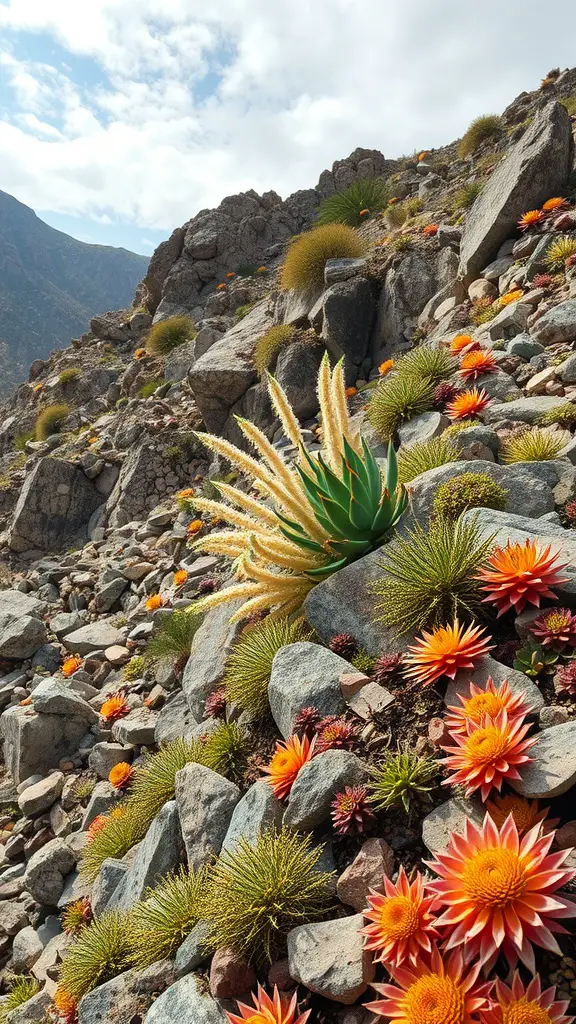
Creating a rock garden on a steep hill can be a fantastic way to add beauty and interest to your landscape. The image showcases a stunning arrangement of colorful flowers and unique plants nestled among rocks. This combination not only looks great but also helps with drainage and soil stability.
Using native plants like cacti and succulents can thrive in rocky environments. They require less water and maintenance, making them perfect for sloped areas. The vibrant orange and pink flowers in the image pop against the earthy tones of the rocks, creating a lively scene.
Consider varying the size and shape of the rocks to add depth and texture to your garden. Large boulders can serve as focal points, while smaller stones can fill in gaps and create a natural look. This design not only enhances the visual appeal but also provides habitats for local wildlife.
Incorporating pathways made of stones can help you navigate your garden easily. These paths can lead to different sections of your rock garden, allowing you to enjoy the beauty from various angles. Overall, a rock garden on a steep hill is a creative way to embrace nature and make the most of your landscape.
Seasonal Color Schemes

When it comes to landscaping steep hills, seasonal color schemes can make all the difference. The image showcases a beautiful staircase surrounded by vibrant flowers, creating a stunning visual appeal. The mix of yellow, orange, pink, and purple blooms adds a cheerful touch to the landscape.
Choosing flowers that bloom in different seasons ensures that your hillside remains lively throughout the year. For spring, consider planting tulips and daffodils for a fresh start. In summer, sunflowers and marigolds can bring warmth and brightness. As fall approaches, think about adding chrysanthemums and asters to keep the colors flowing.
Incorporating greenery, like ferns and ornamental grasses, can provide a lovely contrast to the colorful flowers. This not only enhances the visual interest but also helps with soil retention on steep slopes. The combination of textures and colors creates a welcoming path that invites exploration.

